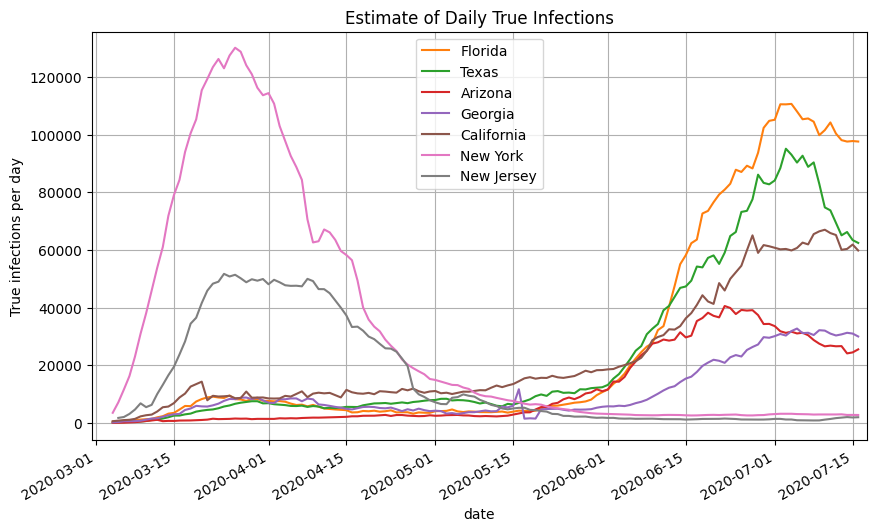covid19-projections.com/us-fl
While I'm not claiming that this is necessarily true, here are some common mistakes I've seen people make when estimating true infections.

This matters when 1-3% of the population are being infected weekly.
Test positivity plays a role as well. At 10-20%, there is a high chance that we are missing more infections than usual.
This matters when 1-3% of the population are being infected weekly.
This matters when many states are undercounting deaths and when young adults have a significantly lower fatality rate.
But that's how many people were infected *4 weeks ago*, under the assumptions that a) there's zero undercounting & b) age distribution of infections matches the population.
Could it still be too high? Sure, but the data thus far has yet to suggest otherwise. This could change as we find out more.
Hopefully, this thread helps clarify these intricacies a bit better.











